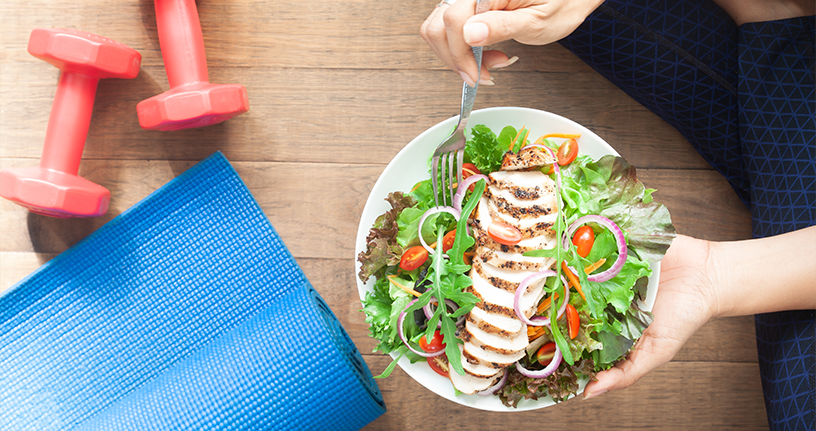Eating a heart-healthy diet is important to live a healthy life. It includes making the right food choice and picking the right amount of each food. Food choices significantly prevent coronary artery disease (CAD) and myocardial infarction (heart attacks) and promote good health. This information guide will help you learn about a delicious and doable heart-healthy diet plan.
A heart-healthy diet is essential!
A healthy diet plan should meet standards for good taste and good health. It is created to keep you at a calorie target that’s appropriate for you and help you get enough of the nutrients you might be lacking, such as calcium and fiber. When consumed in excess, plant nutrient limits are associated with heart disease. According to the dietary guidelines for Americans, limit saturated fats, refined grains, trans fats, dietary cholesterol, sodium, and added sugar. The diet plan includes a variety of vegetables, fruits, and low-fat milk. Beneficial fruits for the heart include apples, grapefruit, blueberries, bananas, watermelon, oranges, pomegranates, and berries. Furthermore, nuts, avocados, tofu, and salmon are all considered the best food for heart.
You might know eating certain foods can increase the risk of heart disease, so changing your eating pattern is often difficult. In such cases, you can take a nutritionist’s help to find the best foods for heart health. Your nutritionist will provide a heart-healthy food list to help you maintain your heart health.
Set healthy targets!
Now you have learned about heart-healthy foods, you may be ready to make some healthy eating changes.It can be tough to make so many changes at the same time. If you make small targets, you will be more likely to achieve your targets.
-
- Control your portion sizeThe amount of food good for the heart is just as important as the quality. Overloading your plate, taking just seconds, and eating until you feel stuffed can result in eating more calories than you should. Portions served in restaurants are often more than the amount that anyone needs. Here are simple tips that help control food portion size that can help create a well-balanced diet, shape your waistline, and improve your heart.
-
- Take a small plate to help control your portions.
- Prefer eating low-calorie, nutrient-rich foods that include green vegetables and colorful fruits.
- Reduce calorie and high sodium consumption such as processed, refined, or fat foods.
It is also important to closely monitor the number of servings you eat. While there are some things that one needs to keep in mind:
-
- A serving size has a specific amount of food, defined by common measurements such as cups, pieces, and ounces. For example, a serving of fish or chicken is about 2 to 3 ounces or about the thickness of a deck of cards.
- The suggested number of servings of food usually depends on the specific guidelines you are following.
- For determining the exact serving size, you may need to use measuring cups and spoons until you learn to judge the serving size.
-
- Add enough fruits and vegetables
- Control your portion sizeThe amount of food good for the heart is just as important as the quality. Overloading your plate, taking just seconds, and eating until you feel stuffed can result in eating more calories than you should. Portions served in restaurants are often more than the amount that anyone needs. Here are simple tips that help control food portion size that can help create a well-balanced diet, shape your waistline, and improve your heart.
Fruits and vegetables contain enough vitamins and minerals. Fruits and vegetables contain low calories and are rich in dietary fiber. Vegetables and fruits, like plant-based foods, contain substances that help to prevent heart disease. Incorporating more fruits and vegetables in your diet may help you reduce higher-calorie foods such as cheese, meat, and other snacks. Keep vegetables washed and cut in the refrigerator for quick snacking. Always keep a bowl of fruits in your kitchen to help you remember it. Choose recipes with more vegetables and fruits as the main ingredients, such as sorted mixed vegetables or fresh fruits mixed into salads.
-
- Choose whole grains
Whole grains are enriched with nutrients and are crucial in regulating blood pressure and heart health. When designing a heart-healthy diet, make simple restrictions for refined grain products. Grain products you can choose from include whole wheat flour, whole grain bread, high-fiber cereal, brown rice, barley, whole grain pasta, and oatmeal. You can also try quinoa or barley. Limit or avoid white refined flour, white bread, muffins, frozen waffles, cakes, doughnuts, biscuits, egg noodles, and buttered popcorn.
-
- Reduce consumption of unhealthy fats
Reducing saturated and trans fats helps reduce your blood cholesterol or risk of heart disease. Excessive cholesterol levels can cause a buildup of plaques in the arteries. The condition is often called atherosclerosis, which can increase the risk of stroke and heart attack. As per guidelines recommended by The American Heart Association, consuming less than 6% of total daily calories is recommended. If you are eating 2000 calories per day, it means about 11 to 13 grams.
-
- Pick low-fat protein sources
Poultry, lean meat, fish, eggs, and low-fat dairy products are considered the best sources of proteins. There are low-fat options available, which include skinless chicken breasts instead of a fried chicken recipe and skim milk rather than whole milk.
Fish can be considered instead of high-fat meats. Fish that contains omega-3 fatty acids helps to lower blood fats, called triglycerides. You will find the highest omega-3 fatty acids in salmon, herring, and mackerel. Other sources include soybeans, walnuts, and canola oil.
Takeaway!
Following a cardiac or heart-healthy diet that prioritizes foods such as vegetables, whole grains, and oily helps maintain overall health. This diet aims to reduce the risk of cardiovascular disease by encouraging you to eat healthily.




